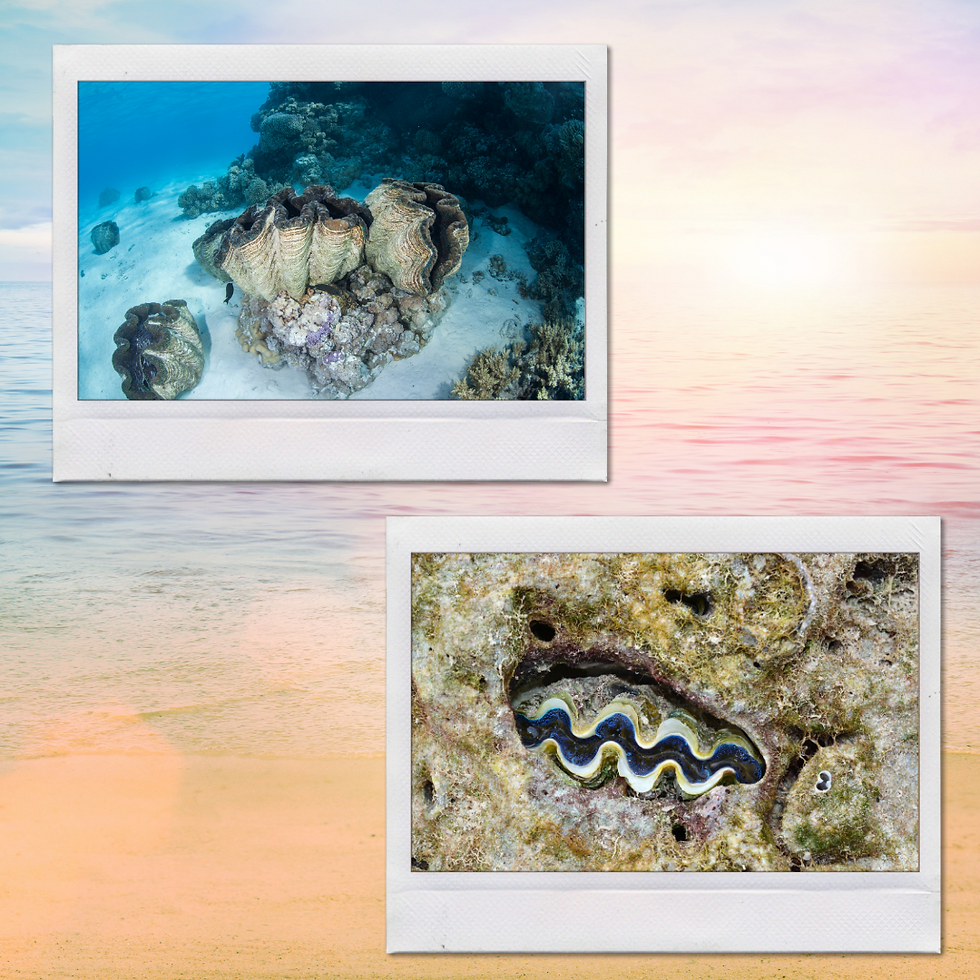The Giant Clam belongs to the family Cardiidae. Since there are different species of Giant Clams, we are specifically talking about the Giant Clam whose genus name is Tridacna gigas. Many misidentify all giant clams to be this one, but there are in fact different giant clams. The Giant Clam is the largest living bivalve mollusk, having a lifespan of about 100 years. This species ranges in the Indo-Pacific Oceans, calling flat coral sand (even broken coral) home. This sessile creature (lack of self-locomotion) can weigh up to 550 lbs. and can get up to about 4 ft in length. Adult T. gigas are the only giant clams that cannot completely shut their shells close (On one of the slides, I found some diagrams online of the body parts so you can understand the language). Even when their shell is closed, their brownish-yellow mantle is still exposed. This species of clams has between 4 and 5 vertical folds in its shell, while other species have between 6 and 7 lines. Since this creature lives in the shallow waters near coral (which is composed of calcium carbonate), the Giant Clam will grow massive calcium carbonate shells (they contain zooxanthellae: single-celled dinoflagellate). The Giant Clam and zooxanthellae have a symbiotic (2 different species that help each other) relationship. Their job is to help utilize carbon dioxide, phosphates, and nitrates produced by the clam. The mantle is covered in hundreds of eyespots. These light-sensitive eyespots help detect danger by shadows, which causes their adductor muscles to retract and close the clam to protect itself. It is extremely hard to open a clam once its shells are shut (it’s a 500 lb animal I’m sure it is hard to open their mouth!). Since this animal is a sessile animal, it does not go and look for a mate. They reproduce using broadcast spawning, releasing both eggs and sperm into the water (they are hermaphrodites: produce both eggs and sperm). To ensure fertilization, they have a transmitter substance called spawning induced substance (SIS) that helps the Giant Clams stay in sync with each other when releasing eggs and sperm. Clams will detect a wave and release this transmitter, so that the other clams will detect it and release their eggs and sperm, so it fertilizes with the wave of incoming eggs and sperm from the clams that put out the signal.
#giantclam #clam #educate #themoreyouknow #marinezoologist #marinelife #oceancreatures #animalfacts #animals #animallover #sealife #seaanimals #ocean #marineconservation #keeptheseaplasticfree #wildlifeseekers #wildlifeconservation #savetheocean #savetheplanet #marinebiology #oceanography #zoology #blackzoologist #tarimahthezoologist
🐬🐋🦈🐡🐙🐧🦦🐠🦑





.png)
.png)
Comments